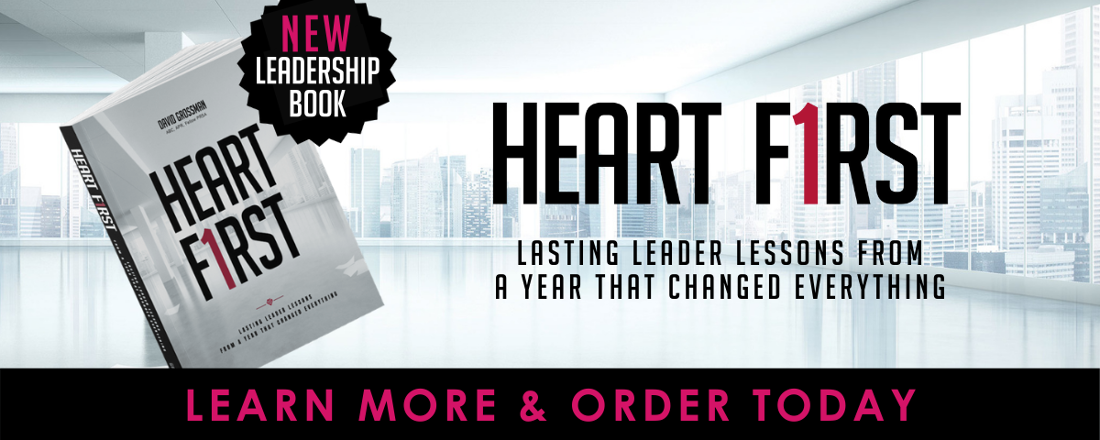which effective communication tool tailors presentations to what an audience wants and needs
You've probably heard the philosophical question "If a tree falls in a forest and no one is effectually to hear it, does it make a sound?" That aforementioned concept applies to communication. If you share a message with an audition and it doesn't make sense to them or they aren't able to connect with it, did they really hear what you had to say? All effective communication begins with knowing your audience and speaking their language – both literally and figuratively. That doesn't mean changing your core messages, but rather adjusting the way yous present them or the context yous offer to help explain those letters in a mode that resonates well-nigh directly with the people to whom you are speaking. Sometimes that is much harder than information technology sounds because audiences tin vary greatly, whether across a squad or an unabridged organization. So where should you begin? Footstep one: Decide who your audience is. You might first by making a listing of the diverse groups that form your audience for an upcoming presentation or a memo that you're writing. Don't limit this listing. Make sure you lot consider all aspects of your audience, including peers and those to whom you written report, if that applies. Think about the dissimilar segments of your audience and specifically: Footstep 2: Consider what is on their minds. Put yourself in their shoes and remember virtually how they view your topic and what they care about. Looking at the earth through their optics volition help you develop an constructive message and deliver it in ways that volition make your audience more likely to listen, engage and act. STEP 3: Think about what you need them to know. While information technology is absolutely critical that yous adapt your messages and means of communication to your audience, that doesn't hateful you should lose sight of what you lot need them to know. Call back your cadre messages and brand certain you are conspicuously and effectively incorporating them into your advice, while simultaneously packaging them in a way that will best meet your audience where they are. STEP 4: Think about what you need them to call up, feel or do based on what y'all tell them. More than just passing along information, effective advice should inform, engage, and inspire listeners or readers. Continue that in mind when you are crafting your side by side spoken communication or memo. Ask yourself what you want the audition to recollect as a event of what y'all have said. Are you calling them to take action of any kind? Is that "ask" conspicuously conveyed and repeated for accent? The nigh constructive communication moves people to activeness, and many times we need to inquire for what we want! STEP five: Decide the all-time means of communicating this information. As a child, we're ofttimes reminded "in that location's a time and a place" for that (whatsoever the activeness may be). That aphorism holds true for constructive communication every bit well. When considering setting and format, if y'all are sharing news virtually a major alter, perhaps that is best done in a town hall or team meeting to allow for face-to-face dialogue. If you're passing on regular updates that people demand to know, but probable won't elicit business, and then consider a memo or regular e-newsletter, depending on the channels you lot have bachelor. The more circuitous the message, the more y'all need a contiguous-like setting. STEP half-dozen: Ask yourself how yous can best chronicle to your audience and motivate them to have activeness. Now nosotros're getting downward to the heart of knowing your audience. Look back at your audience list and their mindset. Call up about a story that you could tell that they might chronicle to, or a way yous could relate dorsum how their actions will accept a broader touch on the company as a whole. This is your chance to add relevancy to what yous're proverb and leave them with a memorable call to action. Ultimately, the primal is knowing your audiences and presenting the information they want to hear along with the data they need to hear in a way that works best for them. When you think nigh message delivery in those terms, y'all're setting up yourself and your audiences for a positive communications experience – no matter the topic you are conveying. Which of these steps provide you the greatest opportunity to be more audience-focused? —David Grossman At present more than ever, leaders play a pivotal role in connecting, calming, and inspiring their teams. A big part of that is leading with Heart First – click beneath tolarn more nigh Heart First and club yours today: 
Where Constructive Communication Begins
 Are you looking for more leadership and advice strategies, best practices, and life lessons that work? My volume, Eye First: Lasting Leader Lessons from a Twelvemonth that Changed Everything is a playbook for leading through tough times, connecting, and edifice trust with employees. Learn more than and order your copy today.
Are you looking for more leadership and advice strategies, best practices, and life lessons that work? My volume, Eye First: Lasting Leader Lessons from a Twelvemonth that Changed Everything is a playbook for leading through tough times, connecting, and edifice trust with employees. Learn more than and order your copy today.

Tags: Communication Skills, Presentation Skills
Source: https://www.yourthoughtpartner.com/blog/6-steps-for-effectively-connecting-with-your-audiences
0 Response to "which effective communication tool tailors presentations to what an audience wants and needs"
Post a Comment